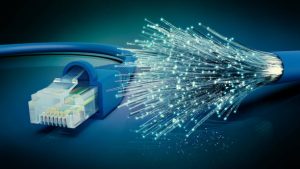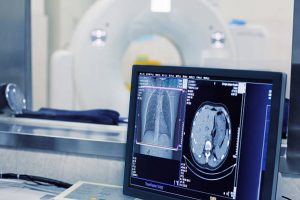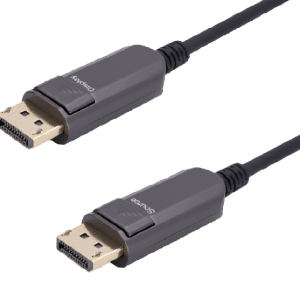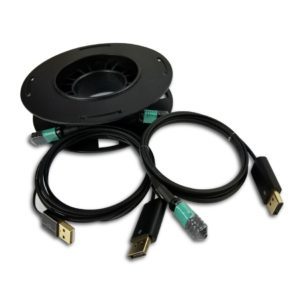As technology refinements continue to accelerate, the delivery of healthcare and diagnostic tools that doctors depend on is improving in ways we could only imagine a few decades ago. The hidden force making these things possible is fiber optics.
As a result, according to Businesswire, the worldwide medical fiber optics industry is expected to reach $1.6 billion by 2030. While initially resistant to embracing technology, the medical world has caught up with the rest of us. This sector is projected to grow in steady increases of 6% per year in the next decade. With this increased attention and respect comes new products and technology refinements.
There are multiple reasons for this surge in interest. These include:
- advancements in healthcare infrastructure,
- an increasing readiness to adopt technology,
- awareness of the benefits of minimally invasive surgery,
- the growing use of endoscopic procedures for diagnostic and therapeutic purposes.
Why Fiber Optics In The Medical Field?
Fiber optics plays a quiet, unseen but vital role in getting things accomplished in a myriad of medical settings. Medical instruments and diagnostics, operating rooms, telemedicine, and medical imaging are achieving better quality, more efficiency and higher resolutions using increasingly sophisticated fiber optics components to achieve better medical outcomes.

Let’s start with why.
Advantages of Fiber Optics for Medical Care
Fiber optics are powering medical settings (transceivers, fiber cables, video extenders and other devices) for these reasons. They:
- have no electro-magnetic interference with other electrical devices
- are robust, resistant to high temperatures, water and radiation
- are adaptive to different environments
- are fast and reliable for transmitting images and data at greater distances
- are electronically secure
- are not toxic to humans
- are flexible and lightweight – have tolerance for tight bends
Moreover, fiber optic-powered cables can transmit enormous amounts of data in multiple streams quickly.
The reluctance to embrace fiber optics technology in healthcare may have stemmed from its disadvantages. These include fiber optics technology is expensive and the installation, testing and maintenance requires special care and professional training. However, as more and more medical facilities and diagnostic procedures rely on the latest technology to improve healthcare, we are seeing great innovations, from refined medical instruments to advanced medical imaging capabilities to operating room integration.

The short list includes:
- Medical imaging
- Robotic-assisted surgery
- Fiber optics instruments including catheters, illuminators, lasers, and others
- Operating room integration
- Endoscopic and minimally invasive surgery
- Telecommunications: telemedicine, the digitalization of medical data
Fiber Optics & Medical Imaging
- Optical Coherence Tomography (OCT) is a medical imaging technique used to capture, three-dimensional images directly from sub-surface tissues. Physicians increasingly choose OCT for diagnostic use in ophthalmology, interventional cardiology, and gastroenterology.
- Cardiac or other forms of anatomical mapping makes use of the latest refinements in video extender technology to illuminate body parts by transmitting images of specific regions of the body in precise detail and high-resolution. These innovations are being designed by world-renowned medical scientists, electrophysiologists, and top medical facilities. Images are often obtained using a catheter inserted in the patient’s body which is connected to a fiber optics device such as DisplayPort. Such devices when used in medical facilities undergo rigorous compliance tests and must be medically certified.
We recently worked with a large medical devices company on a cardiac mapping system: Vitex DisplayPort powers pioneering medical imaging system.
Operating Room Integration
OR integration systems were designed to improve the ergonomics, safety, and efficiency of surgical procedures, particularly during minimally invasive surgery. They allow for the seamless transfer of video from devices to multiple destinations and multiple displays. They also enable centralized control of multiple operating room devices via a common centralized interface.
While they have nearly 10 years tenure in the medical field, more recently, as operating rooms have continued to grow in complexity and add new instruments, processes, and technologies and as medical facilities have become hyper-aware of the need to limit staff exposure to infectious disease like Covid without compromising patient care, fiber optics-powered operating room integration systems have been developed that allow doctors to have access to high-resolution images and medical information remotely.

As an added benefit, these systems also allow medical staff to remotely collaborate with peers through videoconferencing during surgical procedures. In so doing, they minimize traffic in the operating room and conserve protective equipment. Participating medical staff may see visual images displayed on screens in graphic detail through pro-AV and fiber optic-powered video extenders.
Telemedicine, powered by fiber optics telecommunications networks, allows doctors to participate remotely and transmit or access medical information quickly.
Fiber optics is used to power operating room integration systems for many reasons, but a chief advantage is fiber optics components have low EMI: they won’t interfere with all the electrically powered devices in surgical rooms.
Minimally Invasive Surgery and Diagnostic Procedures
Endoscopy examination and inspection of the interior of body organs, joints, or cavities through an endoscope. An endoscope is a device that uses fiber optics and powerful lens systems to provide lighting and visualization of the interior of an anatomical region such as a joint. The part of the endoscope inserted into the body may be rigid or flexible, depending upon the medical procedure.
Endoscopes may be used in conjunction with a camera or video recorder to document images of the interior anatomy or chronicle an endoscopic procedure. New endoscopes have digital capabilities for manipulating and enhancing the video images.
There are many endoscopic procedures doctors use for diagnostic purposes and endoscopes are also used as an aid in minor surgeries.
Conclusion
We can expect medical innovations and efficiency to continue to increase as fiber optics technology is refined. Hand-in-hand, they are moving healthcare light years ahead. Talk to a Vitex product expert to discuss your next project.
Related Products



